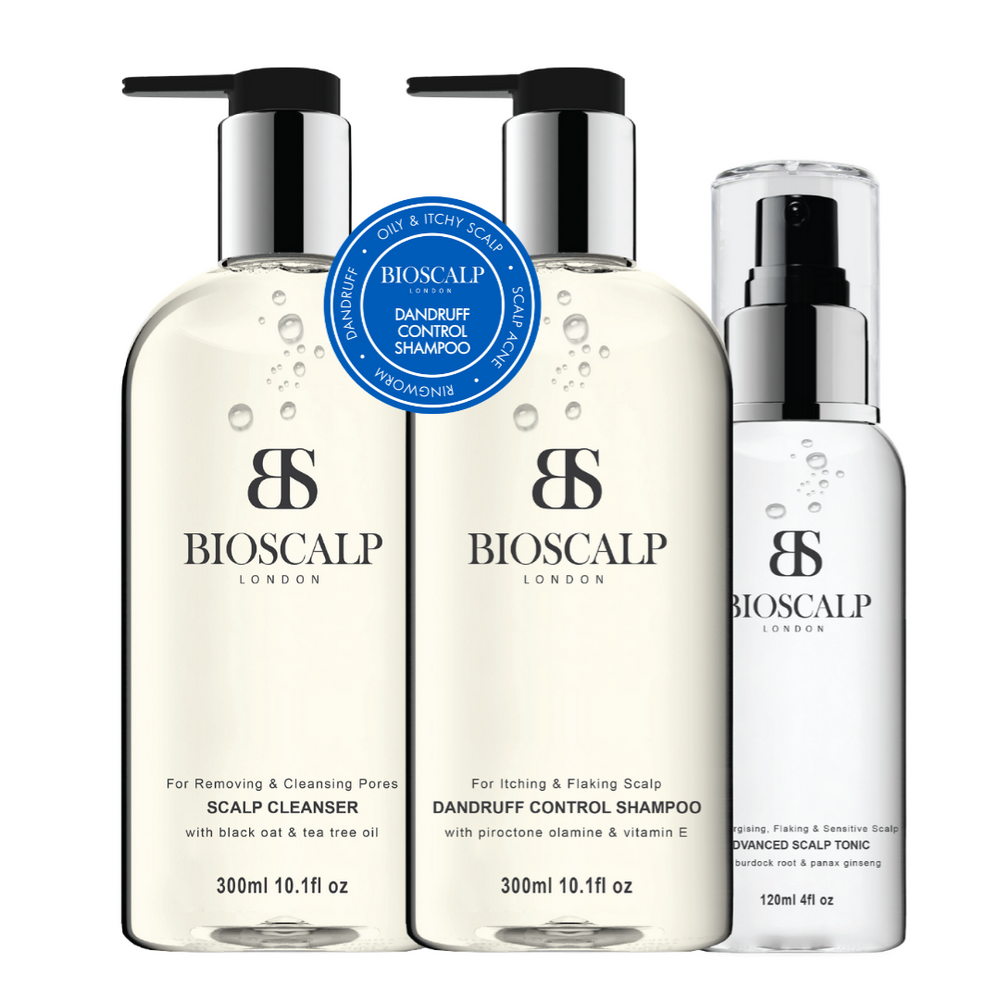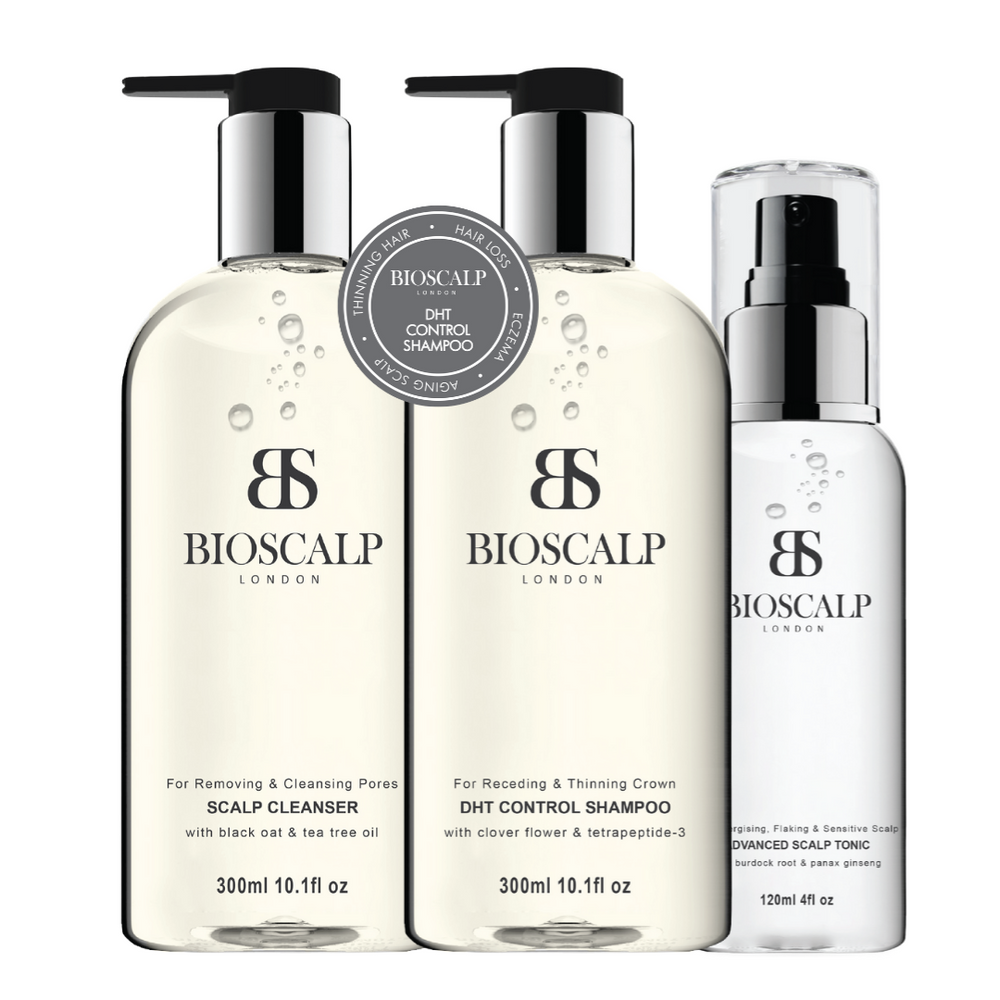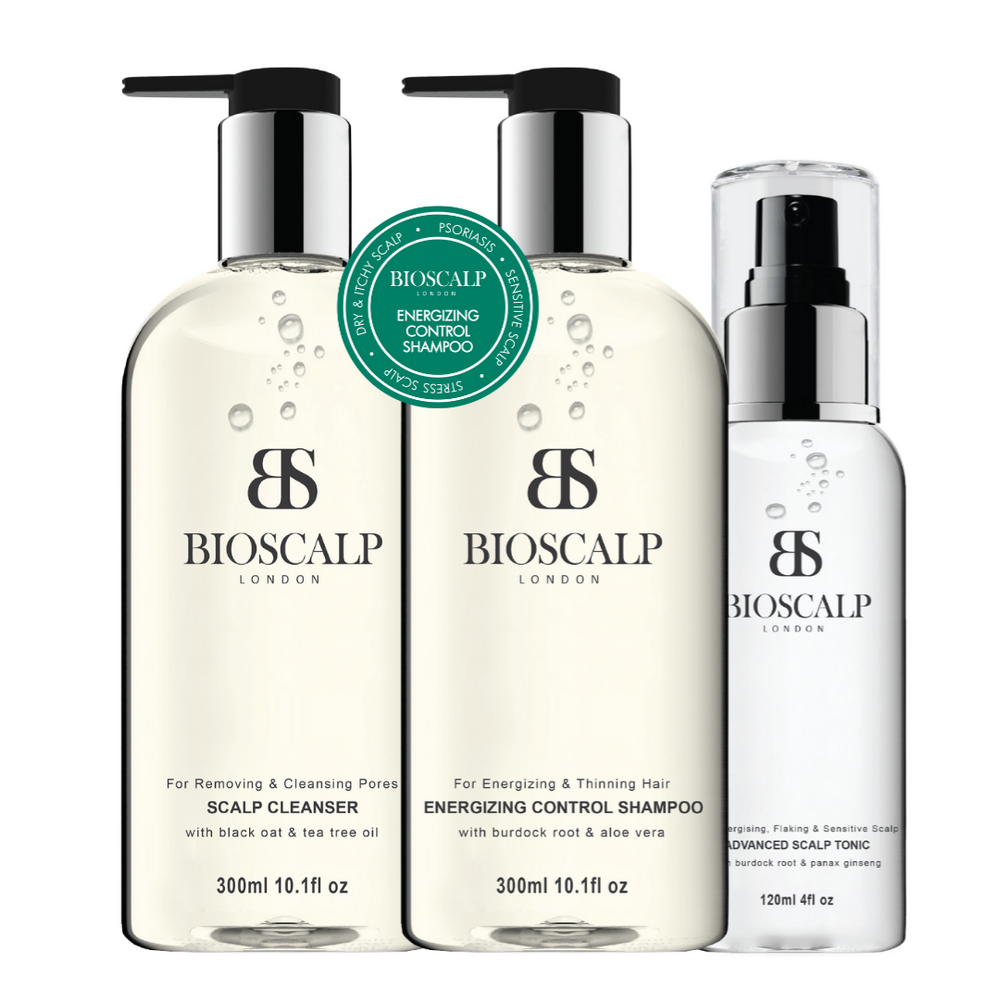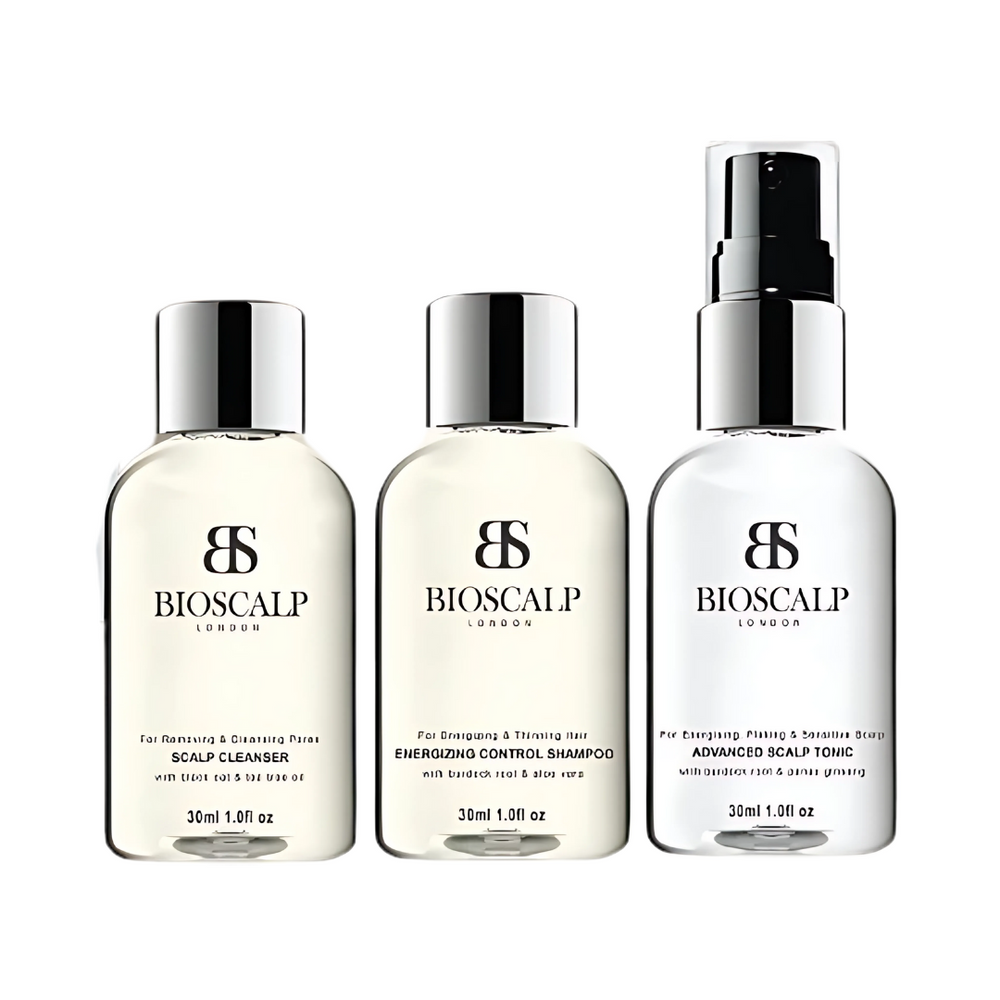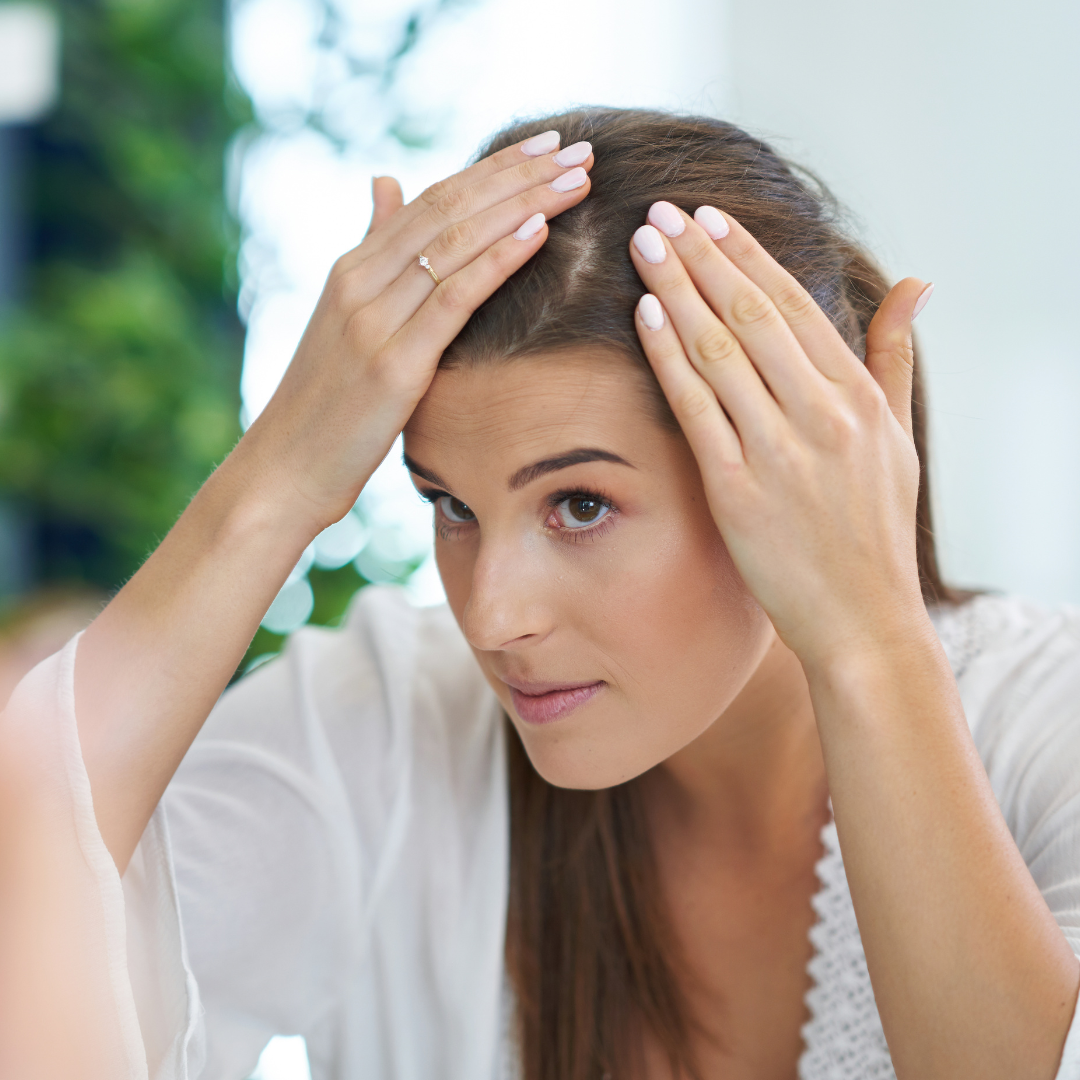If you're dealing with an itchy, flaky scalp that feels tight and uncomfortable, you're not alone. Over 50% of people experience dry scalp at some point in their lives, making it one of the most common scalp conditions. The good news? With the right understanding and treatment approach, you can effectively relieve dry scalp and prevent it from returning.
This comprehensive guide will walk you through everything you need to know about identifying, treating, and preventing dry scalp, helping you achieve a healthy, comfortable scalp once and for all.

Understanding Dry Scalp: What It Is and Why It Happens
The Key Difference: Dry Scalp vs. Dandruff
One of the most important things to understand is that dry scalp and dandruff are two different conditions that require different treatments. Many people confuse these conditions, which can lead to using the wrong products and making symptoms worse.
Dry scalp occurs when your scalp doesn't have enough oil for the skin to feel lubricated. This results in:
- Small, dry white flakes
- Tight, itchy feeling on the scalp
- Dull, brittle hair
- Scalp that feels dry to the touch
Dandruff, on the other hand, is caused by an oversecretion of sebum combined with a fungal infection, producing:
- Large, oily flakes (white or yellow)
- Greasy scalp
- More severe itching
- Inflammation
Common Causes of Dry Scalp
Understanding what causes dry scalp helps you address the root problem rather than just treating symptoms:
- Environmental factors: Cold weather, dry air, indoor heating, and air pollution can strip moisture from your scalp
- Over-washing: Shampooing too frequently or using harsh, sulfate-based shampoos removes natural oils
- Product buildup: Styling products, dry shampoos, and hair treatments can accumulate and irritate the scalp
- Age: As we get older, our skin naturally produces less oil, including on the scalp
- Dehydration: Not drinking enough water affects skin moisture levels throughout your body
- Contact dermatitis: Reactions to fragrances, dyes, or harsh chemicals in hair products

Proven Methods to Get Rid of Dry Scalp
1. Switch to Gentle, Moisturizing Hair Care
The foundation of treating dry scalp starts with your cleansing routine. Look for shampoos that are:
- Sulfate-free
- Paraben-free
- Free from drying alcohols
- pH-balanced
- Specifically formulated for dry or sensitive scalps
For particularly stubborn dry scalp, consider specialized treatments like the BioScalp Energizing Shampoo, which is specifically designed to address dry scalp concerns while maintaining the scalp's natural moisture balance.
2. Implement Oil Treatments
Natural oils can effectively replenish moisture and repair your scalp's barrier function. The most beneficial oils include:
Coconut oil: Recognized by the medical community for its moisturizing and anti-inflammatory properties
- Apply to scalp before bed
- Leave overnight
- Wash out with gentle shampoo in the morning
Jojoba oil: Closely mimics the scalp's natural sebum
- Massage into scalp for 5-10 minutes
- Leave for at least 30 minutes before washing
Olive oil: Rich in vitamin E and fatty acids
- Warm slightly before application
- Focus on the driest areas
- Use once or twice weekly
3. Try Proven Home Remedies
Several natural treatments can provide relief without harsh chemicals:
Aloe vera: Soothes irritation and provides moisture
- Apply pure aloe vera gel directly to scalp
- Leave for 30 minutes before rinsing
Apple cider vinegar rinse: Helps balance scalp pH
- Mix 1 part vinegar with 2 parts water
- Use as a final rinse after shampooing
- Do this once weekly
Honey and yogurt mask: Provides moisture and soothes irritation
- Mix equal parts honey and plain yogurt
- Apply to scalp for 20 minutes
- Rinse thoroughly with lukewarm water
4. Adjust Your Hair Care Routine
Small changes in your routine can make a big difference:
- Reduce washing frequency: Wash hair 2-3 times per week instead of daily
- Use lukewarm water: Hot water strips natural oils
- Be gentle: Avoid vigorous scrubbing which can irritate the scalp
- Limit heat styling: Excessive heat can dry out both hair and scalp
- Protect from elements: Wear hats in cold weather and use UV protection in summer
5. Consider Specialized Treatments
For persistent dry scalp, targeted treatments can provide comprehensive relief. The BioScalp Energizing Control Kit offers a complete system designed to address dry scalp at multiple levels, combining gentle cleansing with intensive moisturizing treatments.
Key Ingredients to Look For
When shopping for dry scalp treatments, these ingredients can be particularly helpful:
- Hyaluronic acid: Provides intense hydration
- Salicylic acid: Gentle exfoliation to remove flakes
- Tea tree oil: Natural antifungal and moisturizing properties
- Zinc pyrithione: Helps control flaking (when fungal component is present)
- Ceramides: Help repair the scalp's barrier function

Prevention Strategies for Long-Term Relief
Lifestyle Changes
- Stay hydrated: Drink at least 8 glasses of water daily
- Use a humidifier: Add moisture to dry indoor air
- Eat omega-3 rich foods: Salmon, walnuts, and flaxseeds support scalp health
- Manage stress: Stress can exacerbate scalp conditions
- Get adequate sleep: Allows skin to repair and regenerate
Product and Routine Adjustments
- Read ingredient labels carefully
- Avoid products with harsh sulfates and alcohols
- Don't overuse dry shampoo
- Clean hair tools regularly
- Give new products time to work (at least 2-4 weeks)
When to See a Healthcare Provider
While most cases of dry scalp can be managed at home, seek professional help if you experience:
- Severe itching that disrupts sleep or daily activities
- Signs of infection (redness, warmth, pus)
- Hair loss accompanying dry scalp
- No improvement after 4-6 weeks of treatment
- Spreading rash or unusual scalp changes
- Bleeding or open sores from scratching
Common Mistakes to Avoid
Understanding what not to do is just as important as knowing the right treatments:
- Using dandruff shampoo for dry scalp: Anti-dandruff products can be too harsh and worsen dryness
- Over-treating: Using too many products can irritate the scalp
- Ignoring underlying causes: Address lifestyle factors, not just symptoms
- Switching products too quickly: Give treatments time to work
- Using hot water: Always opt for lukewarm water when washing
The Bottom Line: A Healthy Scalp Is Within Reach
Dry scalp can be uncomfortable and embarrassing, but with the right approach, it's entirely manageable. Start by identifying whether you truly have dry scalp or another condition like dandruff. Then, implement a gentle cleansing routine, add moisture through oils and treatments, and make lifestyle adjustments to support scalp health.
Remember, consistency is key. Most people see significant improvement within 2-4 weeks of following a proper dry scalp care routine. By understanding your scalp's needs and providing appropriate care, you can achieve lasting relief from dryness, itching, and flaking.
Whether you choose natural remedies, over-the-counter treatments, or specialized products designed for dry scalp care, the most important step is to start treating your scalp with the same care and attention you give to your facial skin. Your scalp—and your hair—will thank you for it.


